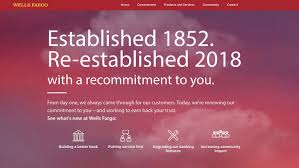


The Cost of Recovering from Self-Inflicted Wounds
By Nora Jacobs, Hennes Communications
Those who have weathered crisis events within their organizations know that there are many costs the event can inflict – not including the heavy emotional and personal toll on those charged with responding to it. Some costs, such as lost business, staff defections, fines and jail time can be measured. Others, such as bad blood with neighbors, social media black eyes and damaged reputations are tough to assess, but certainly affect the ability to do business successfully post-crisis and may require significant investments to rectify.
High-profile companies provide excellent ways to measure the immediate impact that a crisis event can have. United Airlines, for instance, reportedly lost nearly $1.4 billion in share value after it dragged a paying passenger off one of its planes last year. Time magazine estimated Starbucks might lose up to $12 million in revenue when it closed 8,000 locations for a half day in May to conduct racial bias training following the event at one of its Philadelphia locations. After Volkswagen announced in 2015 that its engineers had devised ways to circumvent emission testing equipment that caused drivers to pump nitrogen oxide into the environment at 40 times allowable levels, the company announced a loss of nearly $1.9 billion in one quarter alone.
Lost value and lost earnings are easy to measure. But what about the immeasurable impact a crisis can have on reputation and, more precisely, on lost trust? What does it cost to lose your stakeholders’ trust? And what does it cost to earn that trust back? Wells Fargo, one of the oldest and largest banks in the country, provides an interesting case study.
In 2016, Wells Fargo disclosed that it would pay more than $187 million in penalties to regulators after an audit discovered that employees had opened as many as two million deposit and credit accounts in customers’ names without their knowledge or consent. The company at first blamed employees for the problem and fired 5,300 of them. But eventually, it was revealed that managers had encouraged them to set up the accounts to meet sales goals.
This year, Wells Fargo is paying $1 billion in fines to the federal government, including $500 million to the Consumer Financial Protection Bureau, after the company was found to have charged improper fees for locking in rates on mortgages and making auto loan customers pay for insurance they did not want.
It has settled a $480 million class-action lawsuit with shareholders and has clawed back $75 million from former bank executives. And, as this story details, its troubles with regulators may not be over.
But as even as those penalties hit, the company apparently knew it had a bigger debt to pay. In April, Wells Fargo launched a new integrated marketing campaign focused on “earning back your trust,” crafted by the San Francisco office of BBDO Worldwide, one of the largest advertising agencies in the world. Chances are, you’ve seen or read one of the ads in this campaign, as it reportedly is being run nationwide on TV, as well as in print publications and on digital platforms and mobile channels. For a sample, click here to see the commercial currently running on the company’s YouTube channel.
It’s been a long time since I bought ad space, but I know multi-channel, national campaigns can be expensive, even with the clout that BBDO’s media buyers no doubt have. Some analysts estimate the campaign will cost millions of dollars. That amount could expand significantly if researchers find it’s not moving the needle fast enough with skeptical consumers and former customers.
If Wells Fargo had toed the line with its lending policies, could the cost of this campaign have been spent instead marketing products and growing share? Absolutely. Could it have saved the money entirely and given the savings back to shareholders? That could have worked too. Instead, the company faces the prospect of investing in a sustained, expensive effort to rehabilitate its reputation and the outcome is not guaranteed.
We often say that a company’s largest uninsured asset is its reputation. This example demonstrates how valuable that asset can be and how expensive it can be to restore it once it’s been damaged – if it can be restored at all.
Addendum: As recently as July 2, Wells Fargo was once again in the news, this time on NPR’s Marketplace, where in addition to mentioning that the bank had passed the Federal Reserve’s annual stress test, reporters also talked about an ad campaign the company is running that features its charitable donations and the volunteer work its employees do. To hear the report, click here.